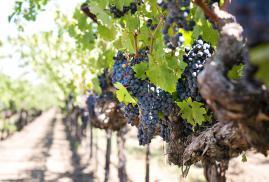
We’ve reached a new era in winery risk management. Wildfires, droughts, rising temperatures and changing weather patterns are testing the resilience and adaptability of vintners. The duration of growing and ripening seasons is changing, with the average wine harvest today coming 10 days earlier than in 1981. Fortunately, wine growers are no strangers to unpredictability. Adaptability is in their DNA, and the world’s wine countries have become laboratories for the reshaping of agriculture in the face of climate change.
Below are 12 risk management strategies to help you adapt to a changing climate:
- Protect and document your inventory. If your wine cellar was built before 1970, you may need seismic retrofitting. Be sure secure wine racks to the wall and/or use earthquake resistant wine racks. It’s best to store bottles horizontally and minimize your storage height. Keep an up-to-date inventory of your wine and any related appraisals stored in an offsite location. This documentation will be invaluable if you have to file a claim.
- Prepare for power loss. During natural disasters, long-term electricity outages are to be expected. Be ready. Install backup generators or have other alternative strategies in place so you can power critical functions.
- Diversify your geography. Some industry experts have predicted that by 2050, parts of California, France, Spain, Portugal, Australia, and South Africa will be too hot and dry for making wine. Some wineries are shifting operations into cooler zones.
- Experiment with new grape varieties. Many wineries are taking a hard look at their portfolio of grape varieties with an eye toward long-term sustainability. Heat-tolerant and late ripening varieties are two options being examined.
- Use falcons and drones to manage pests, reduce the use of pesticides, monitor crops and assist with pollination.
- Adjust your timing for pruning, trellising, and harvest. For example, vine canopies can be trimmed less or later than normal during especially warm seasons to increase shade and reduce solar radiation.
- Change the orientation of vine rows to reduce heat and sun exposure.
- Add irrigation infrastructure and better drainage to compensate for unpredictable rains.
- Use perennial and annual covercropping to help mitigate the impact of intense rainfall, reduce fungus growth, and combat weeds.
- Use climate measuring technology to monitor moisture and heat. This technology assists during harvest and fermentation.
- Harvest grapes in cooler weather to minimize incidences of heat illness among workers.
- Partner with an insurance agent who is experienced in your industry. Each of the measures above has its own inherent risks. And, beyond growing and harvesting, there are countless other risks involved with packaging, distributing, transporting and serving wine. For example, as vineyards become more tech savvy and reliant on Web-based tools, cyber risk has emerged as an important risk to manage.
With more than 20 years’ experience providing risk management solutions for the winery industry, Heffernan's specialty insurance for wineries, vineyards, growers knows your challenges and your needs as well as anyone. Contact us today to see how we can help you manage the unpredictable and protect your investment.
